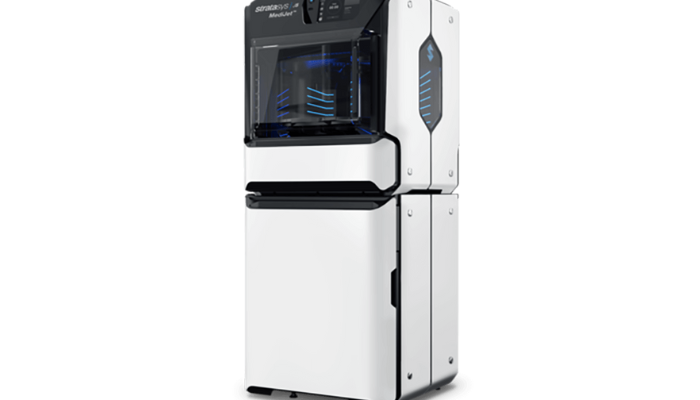Improved Surgical Times at University Hospital Birmingham Thanks to 3D Printing

One area in which we have rapidly seen the growth of 3D printing is the medical field due to its ability to design solutions tailored to each patient while reducing lead times. This has been particularly remarkably at Birmingham University Hospital in England, where significant improvements have been seen in the treatment of patients with head and neck cancer. By using customized 3D-printed incision guides, the hospital was able to cut surgical times by up to three hours.
This breakthrough has transformed the way these tumors are removed as precise, patient-specific incision guides are provided prior to surgery. Previously, these were created by cutting and bending metal by hand while the patient was on the operating table, which was time-consuming and fraught with potential errors. Notably they have turned to Stratasys, namely the J5 MediJet, for the creation of these guides as PolyJet technology allows for the creation of “amazingly realistic, biocompatible and sterilizable anatomical models” according to Stefan Edmondson, Consultant Clinical Scientist (Reconstructive Science) at the hospital.

By integrating customized 3D-printed surgical guides, they optimize patient outcomes while reducing intervention times (photo credits: Stratasys)
Creating Precise Surgical Guides With 3D Printing
The use of 3D printing enables the surgical team to design highly accurate devices from patient scans, with a resolution of less than 150 microns, bringing an improvement to surgical results. These devices, developed from the rigid and transparent Biocompatible Clear MED610™ resin, are particularly suitable for applications requiring prolonged contact with the skin, over 30 days, and limited contact with tissue, bone or mucous membranes for up to 24 hours.
Edmondson emphasized the impact of 3D printing, stating, “In addition to saving up to three hours of surgery time, 3D printing also enables much better surgical planning. Using patient scans, the team is able to create 3D visualizations based on the distinct anatomy of each patient – and then leverage 3D printing technology to produce both anatomical models and personalized surgical cutting guides ahead of the actual operation.”
According to the hospital, precise fabrication of incision guides is essential when transplanting into the head or neck. Inaccurate cuts could lead to fit problems and rejection by the body, resulting in discomfort for the patient. The use of 3D printing in this complex process – taking a segment of a patient’s fibula, molding it, then transplanting it into the target area while preserving the bone tissue – demonstrates that it has superior capabilities to traditional methods.
Stefan Edmondson concludes: “This capability means we can not only accurately predict the surgery before it’s done, but that we have the tools to ensure that the meticulous pre-surgical planning can be executed with the utmost precision. The surgical team is also much better prepared and the patient is far more at ease, as we can talk through the process and expected outcomes prior to going into the operating theater.”
What do you think of these 3D-printed incision guides? Let us know in a comment below or on our LinkedIn, Facebook, and Twitter pages! Don’t forget to sign up for our free weekly Newsletter here, the latest 3D printing news straight to your inbox! You can also find all our videos on our YouTube channel.
*Cover Photo Credits: Freepik






